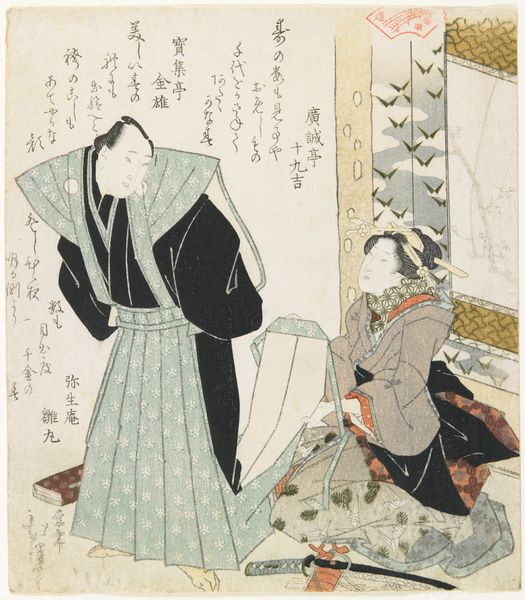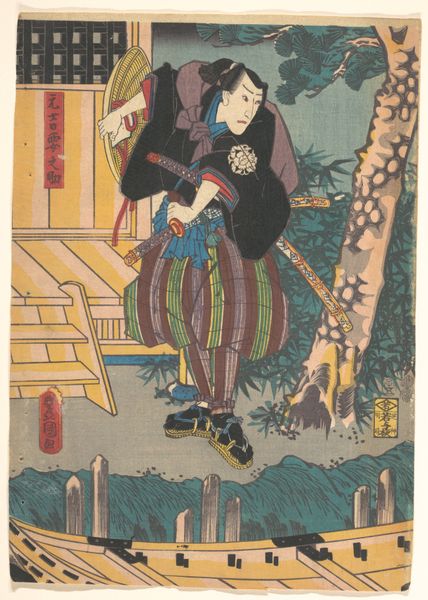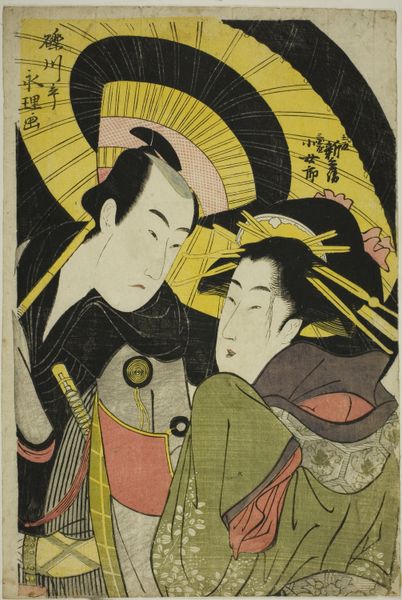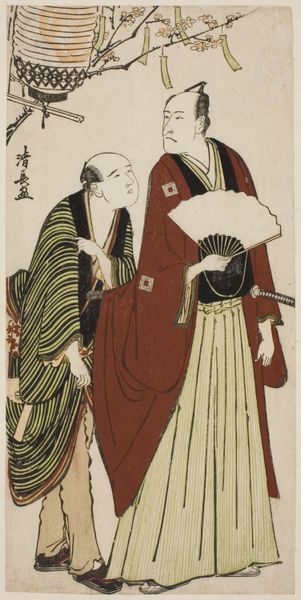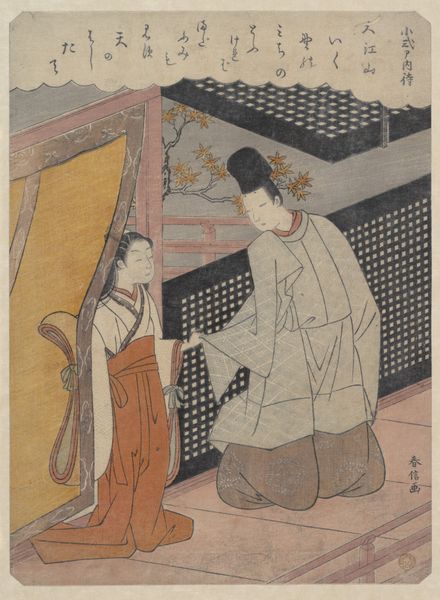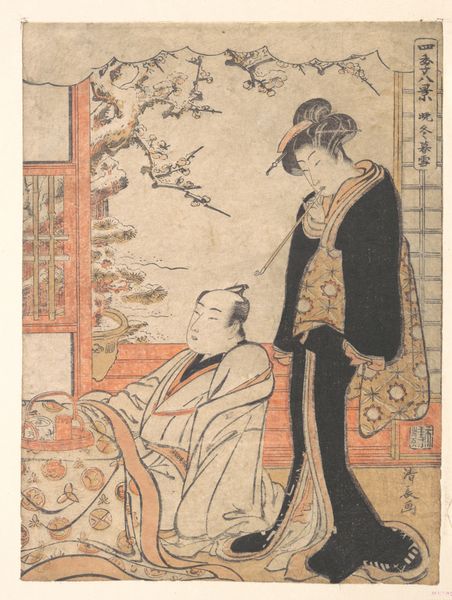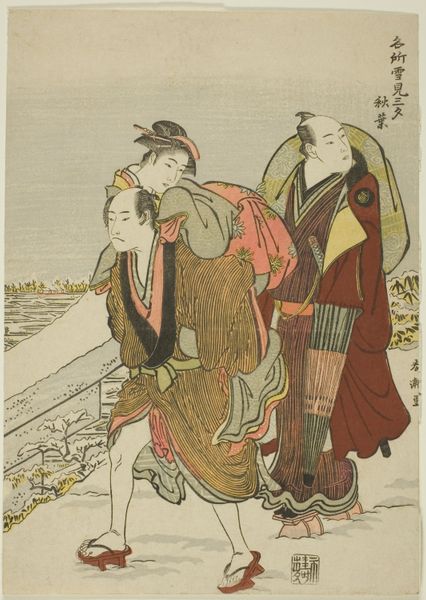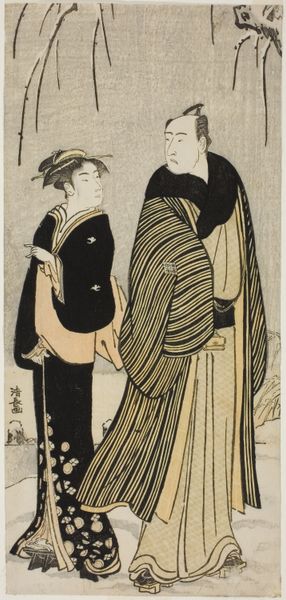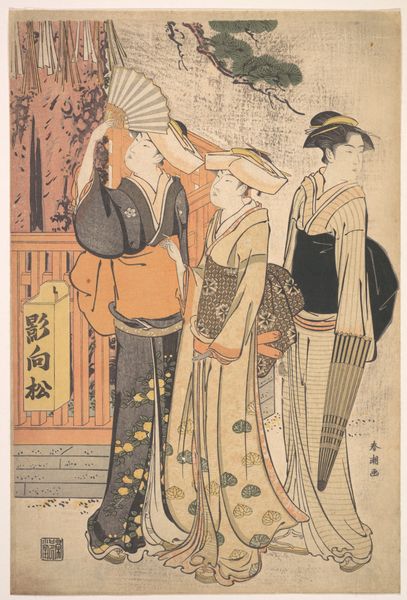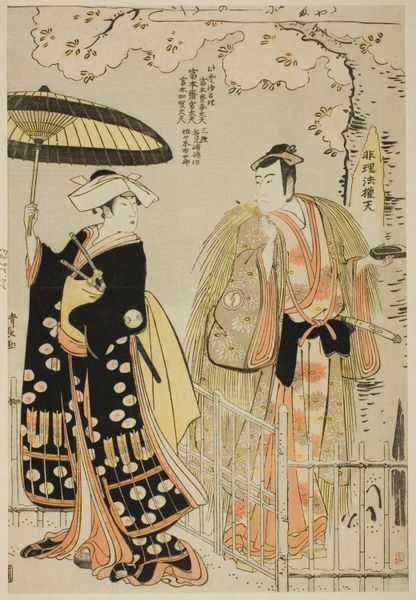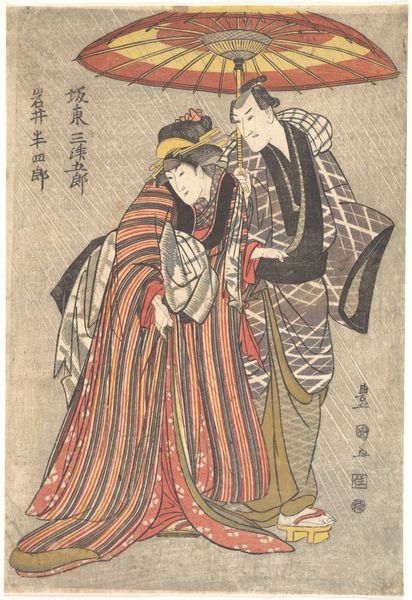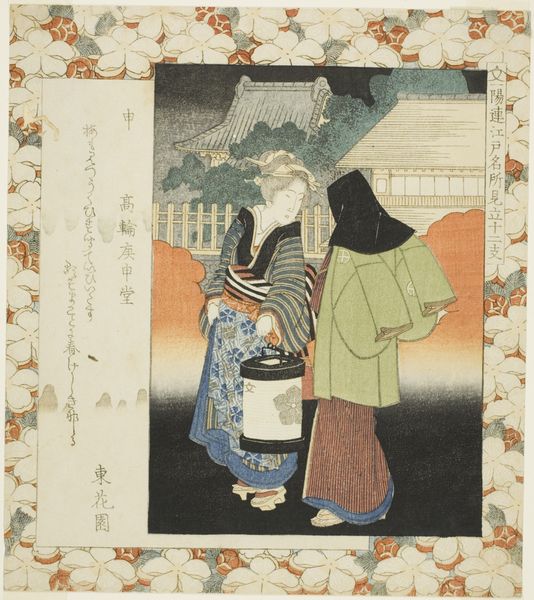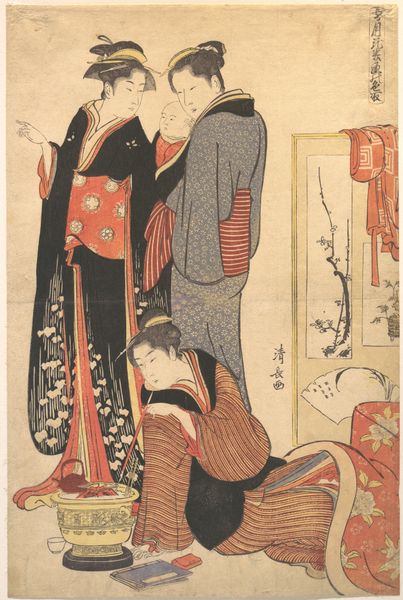
Kômori Yasugorô and Kirare Yosaburô conspiring Possibly 1860 - 1867
0:00
0:00
print, woodblock-print
#
portrait
#
narrative-art
# print
#
caricature
#
asian-art
#
caricature
#
ukiyo-e
#
woodblock-print
#
watercolour illustration
#
cartoon style
Dimensions: height 363 mm, width 246 mm
Copyright: Rijks Museum: Open Domain
Curator: Right, let’s dive into this remarkable woodblock print. It's entitled "Kômori Yasugorô and Kirare Yosaburô conspiring" and it’s attributed to Utagawa Kunisada. We believe it dates back to the mid-19th century, possibly between 1860 and 1867. It's part of the Rijksmuseum collection. Editor: Immediately, I'm drawn in by the stark contrast of the blue and the dark background. And those faces! It's as though we've walked right into the middle of some secretive plan being hatched in the dead of night. There’s something playfully menacing about the whole thing. Curator: The composition, as you pointed out, does set a theatrical tone. Kunisada was masterful at capturing narrative and drama through ukiyo-e prints. This work exemplifies the period's fascination with stories of the common people—often highlighting themes of power, social tensions, and morality. What do you read in the body language here? Editor: Definitely a power imbalance! The fellow with the head wrap, Kômori, looms. He has this intensely focused expression, a touch sinister even. And Yosaburô, with his, well, makeshift bandages—there’s something inherently vulnerable about him, though his eyes blaze with an intent that suggests, this isn't going to end well for somebody! Curator: Exactly. If we examine the details, such as Kômori's clenched fist, the symbolic garments, and the overall tonality, it is reasonable to consider possible societal readings. Were these characters representing, perhaps, factions battling for dominance? Or maybe this is simply a narrative on marginalized groups plotting their ascension within strict social confines. What do you think about those labels and their effect to the artwork? Editor: The text blocks are crucial as design elements. For me, the script heightens that feeling of stylized theatricality. I feel like these guys could jump off of the printed paper. Curator: These characters and scenes held significance for a specific audience deeply ingrained within the cultural and political context of that era. While appreciating the pure aesthetics, the sociohistorical perspective opens a discourse around power dynamics and societal allegiances portrayed through Kunisada’s lens. Editor: Absolutely, and sometimes, I think it's nice just to lose oneself in the little world the artist has created, feel the emotions—even the slightly uncomfortable ones—and simply allow yourself to be transported! Curator: Indeed, perhaps that’s where the true beauty of Kunisada’s work lies—his ability to spark that dialogue between the historical and the personal. Editor: To allow us to plot and scheme—artfully of course—right along with them.
Comments
No comments
Be the first to comment and join the conversation on the ultimate creative platform.
